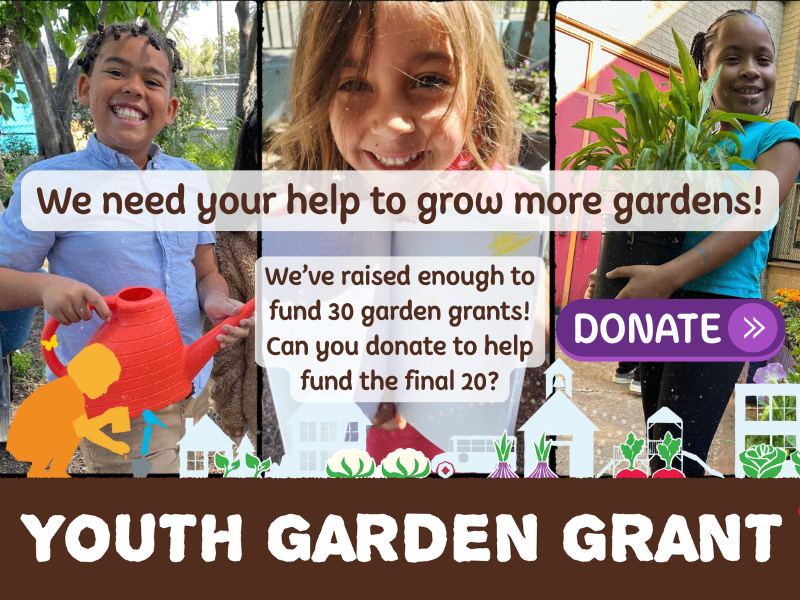A successful youth garden provides endless opportunities for kids to explore, interact, and learn, as well as offering spaces for rest, reading, and reflection. While raised beds and other planted areas are usually the first places that come to mind when designing a garden space, incorporating a variety of built elements ensures there are places for learning and connecting in every season.
Seating
Offer a variety of resting spots where kids can observe nature, absorb a lesson, sketch plants and wildlife, and write in their journals. Include individual seating where kids can find some privacy, as well as seats in pairs and small groups to invite conversation and connection.
- Tree stump seats. Cross-cut sections of trees in various heights accommodate youth of different ages. Note that newly cut stumps may ooze sap, so be sure to cover them with something waterproof. Dry, older stumps can be painted on top with multiple layers of outdoor paint to ensure they are sap-free and splinter-free.
- Garden benches are a natural choice and readily available in a variety of materials. If you’re on a tight budget, consider making some Leopold benches. These comfortable benches have a simple design and are easy to build using affordable and/or scrap materials and just a few tools. Another benefit of this bench is that, when you sit backwards on it and slip your legs through the opening between the seat and the back rail, the rail offers a comfortable place to rest your elbows while holding binoculars or reading a book. Surely Aldo Leopold, a pioneer in the conservation movement for whom this bench is named, would appreciate this feature! Find step-by-step instructions from the Iowa State University Extension office.
Shelter from the Elements
Offering places sheltered from sun, wind, and rain extends the time kids can comfortably spend outdoors. Structures with a solid roof, such as a greenhouse, garden shed, or gazebo, provide the most shelter, but there are plenty of other ways to protect kids from the elements.
- Shade sails. Outdoor fabric (or even a tarpaulin) strung between trees can offer affordable protection from the sun and rain.
- Arbors and pergolas. Planted with climbing vines, these structures offer respite from the hot sun. And even without plants, arbors with wooden slats at the top offer some shade. Or, you can weave strips of fabric between the slats for extra shade. Place multiple arbors or pergolas in a row to create a shady tunnel.
- Walls and fences. These can be planted perpendicular to the direction of prevailing winds to offer shelter from chilly winds and wind-blown dust and some shade from hot afternoon sun. Homemade wattle fences, made by weaving flexible saplings or branches between sturdy uprights, are an economic, fun-to-make alternative to more permanent structures.
Places for Privacy
Be sure to build in spots for kids to rest and recharge. A quiet, shady nook with a comfortable bench or glider, a hammock strung between trees or posts, or a few tree swings offer places for observation and reflection. Where it’s practical, a playhouse, tent, fort, or other structure can offer kids a place of refuge and encourage quiet play. Consider setting aside an area to plant a sunflower house or a pea-trellis hideout.
Water Features
Kids are drawn to the sights and sounds of water. Fountains with flowing or bubbling water offer a soothing soundscape. Birdbaths bring the sights and sounds of native songbirds. Ponds of all sizes invite a host of wildlife visitors, from dragonflies to frogs, offering opportunities for kids to learn about habitats and ecosystems.
Even the simplest water elements are welcome additions. Try creating a pollinator water station or a butterfly puddle.
Additional Items to Build
- Pint-sized potting benches
- Outdoor chalkboard
- Wall mural (such as a collaborative mural)
- Sensory tables (kid-height tables filled with water, sand, dry beans, or other materials that kids will enjoy sticking their little hands into)
- Climbing wall
- Fire pit
- Treehouse
- Labyrinth
- Vertical gardens/green walls
- Art easels











